Blog
How Long Do Ant Farms Last on Average? More Details!
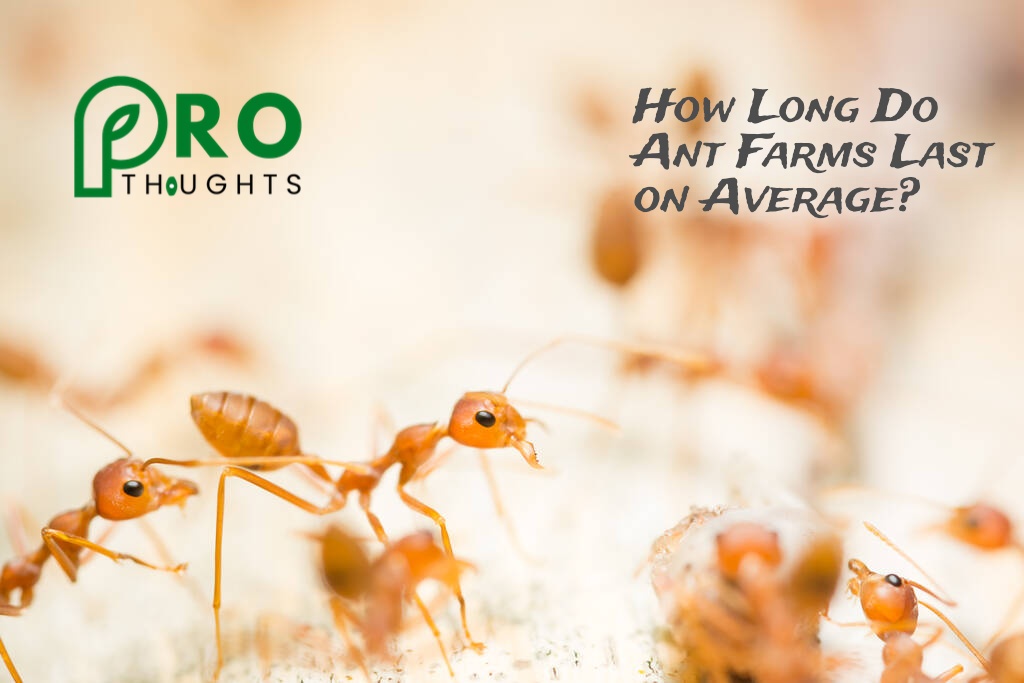
Ant farms are fascinating tools that allow enthusiasts of all ages to observe the intricate lives of ants up close. Whether you’re using an ant farm for educational purposes in a classroom or as a hobby at home, understanding the longevity of these miniature ecosystems is essential. This comprehensive guide explores how long ant farms last on average, factors that influence their lifespan, and tips to ensure your ant farm thrives for years to come.
The Average Lifespan of Ant Farms
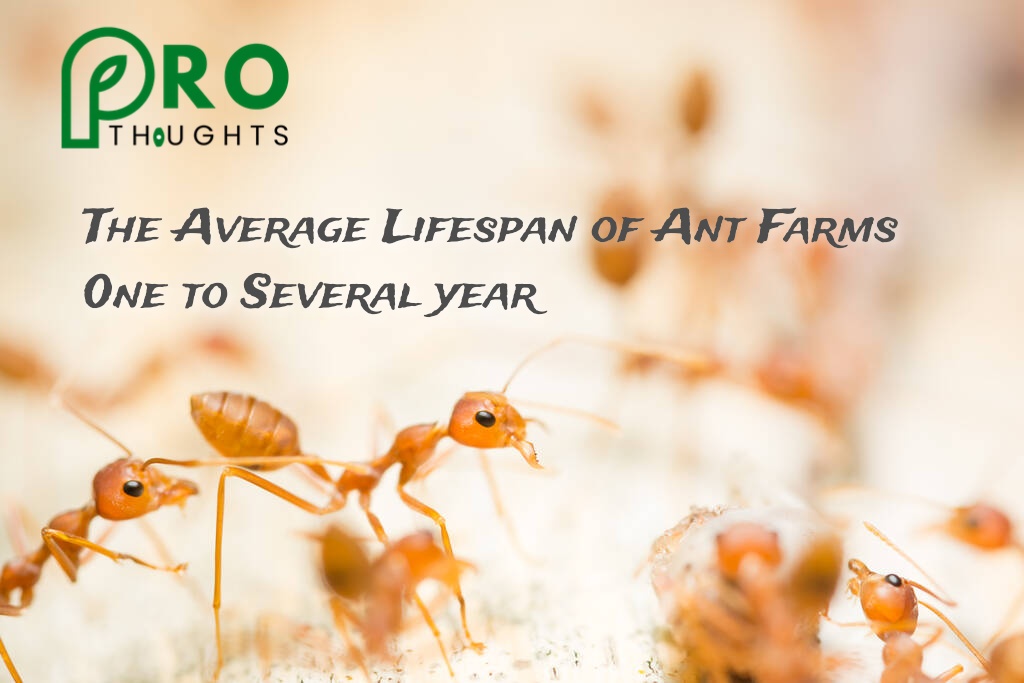
Ant farms typically last two to three years on average. However, this duration can vary depending on several factors, including the type of ant farm, the species of ants, and the level of maintenance provided.
Factors Influencing Lifespan
| Factor | Impact on Lifespan |
|---|---|
| Ant Species | Different species have varying lifespans and colony structures. |
| Farm Type | Closed-loop systems generally last longer with less maintenance. |
| Maintenance | Regular care can extend the lifespan of the ant farm. |
| Environment | Stable temperature and humidity levels promote longevity. |
| Ant Health | Healthy ants contribute to a thriving, long-lasting colony. |
Expert Insight
Dr. Emily Thompson, an entomologist specializing in social insects, states, “The longevity of an ant farm largely depends on maintaining optimal living conditions and understanding the needs of the specific ant species being observed.”
Types of Ant Farms and Their Lifespans
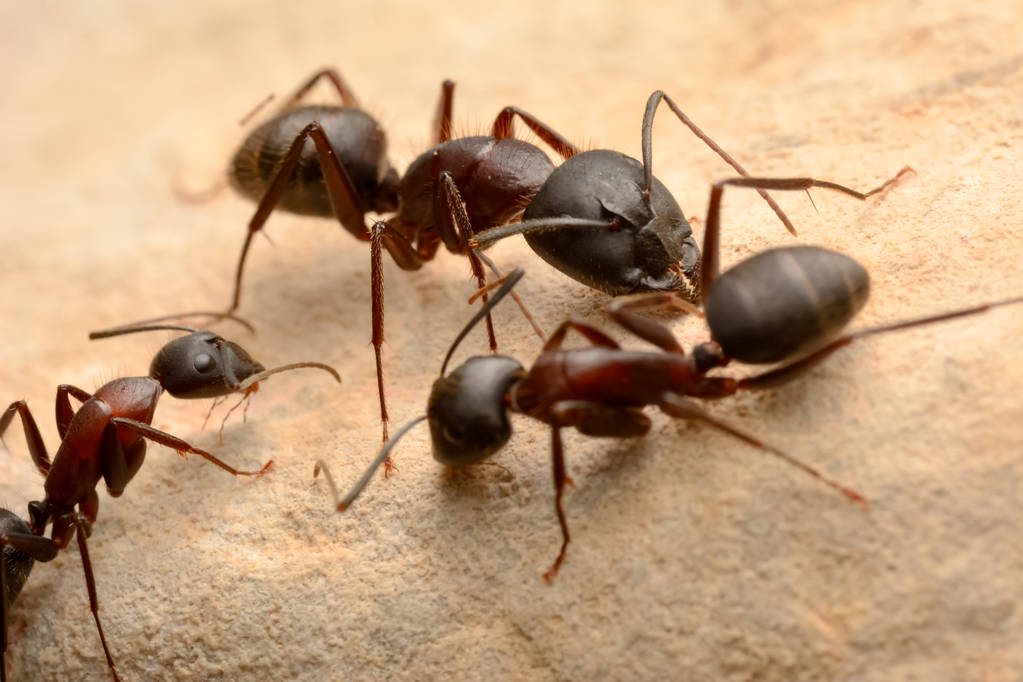
Different types of ant farms offer varying experiences and lifespans. Understanding these differences can help you choose the right ant farm for your needs.
Closed-Loop (All-in-One) Ant Farms
Closed-loop ant farms come pre-assembled in a sealed environment and require minimal maintenance. They are ideal for beginners or those seeking a hassle-free setup.
| Feature | Description |
|---|---|
| Sealed Environment | Reduces the need for regular watering and maintenance. |
| Minimal Setup | Ready to use out of the box with no additional assembly. |
| Limited Customization | Less flexibility in modifying the habitat. |
Pros:
- Easy to set up and use.
- Requires less maintenance.
- Less risk of leaks.
Cons:
- Limited ability to customize the environment.
- May not support long-term observations beyond a few years.
Custom Loop Ant Farms
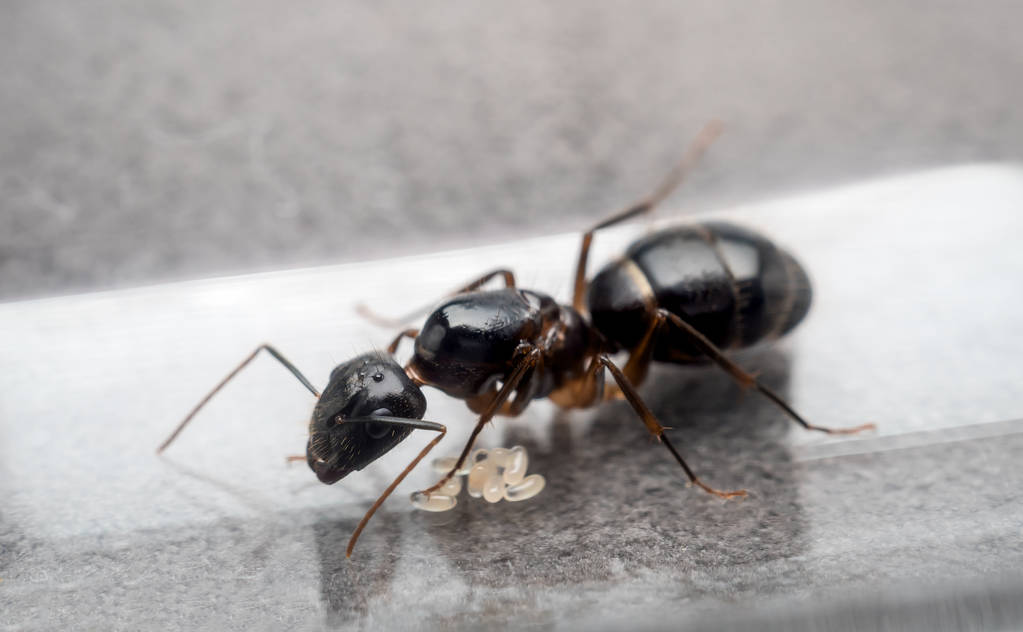
Custom loop ant farms allow enthusiasts to tailor the environment to specific needs, offering a more engaging and customizable experience.
| Feature | Description |
|---|---|
| Customizable Components | Ability to modify tunnels, chambers, and environmental conditions. |
| Enhanced Observation | Clearer visibility and better access for detailed study. |
| Higher Maintenance | Requires regular upkeep to maintain optimal conditions. |
Pros:
- Highly customizable for specific research or observation needs.
- Can support longer-lasting colonies with proper care.
- Enhanced educational value.
Cons:
- More complex to set up and maintain.
- Higher initial cost due to customizable parts.
Open-Loop Ant Farms
Open-loop ant farms are typically used for display purposes and allow direct interaction with the ants. They offer a unique viewing experience but require diligent maintenance.
| Feature | Description |
|---|---|
| Exposed Components | Allows for close-up observation and interaction. |
| Aesthetic Appeal | Often designed with decorative elements for visual appeal. |
| High Maintenance | Requires regular cleaning and monitoring to prevent issues. |
Pros:
- Provides an immersive viewing experience.
- Ideal for educational demonstrations.
- Visually appealing designs.
Cons:
- High risk of ants escaping.
- Requires constant maintenance and monitoring.
Lifespan of Ants Within the Farm
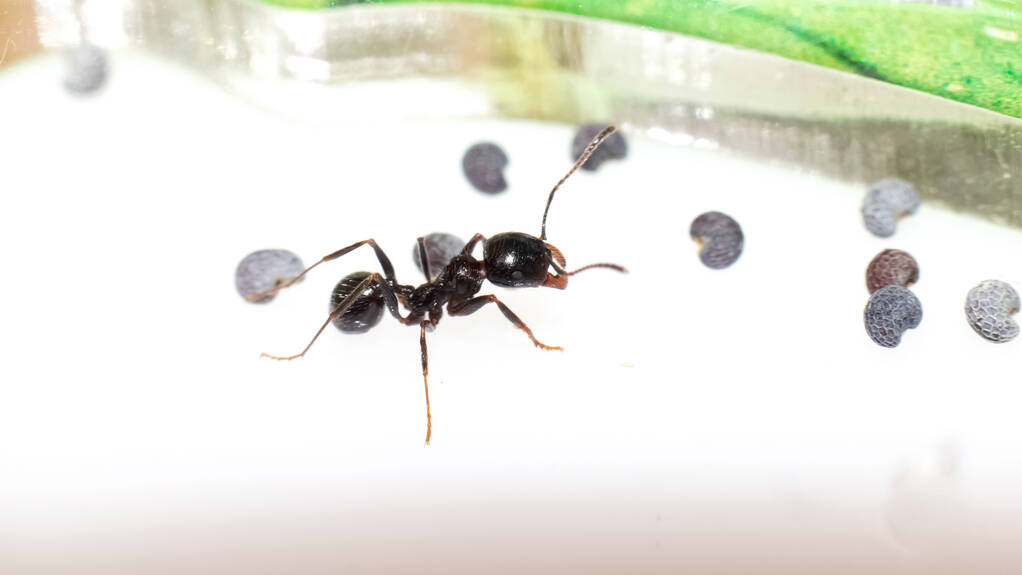
While the ant farm itself may last several years, the individual ants have lifespans that contribute to the colony’s overall longevity.
Ant Lifespans by Role
| Role | Species | Lifespan |
|---|---|---|
| Queen | Formica fusca | Up to 20 years |
| Worker | Lasius niger | 1 to 3 years |
| Male | Camponotus pennsylvanicus | 1 to 2 months |
Colony Growth and Dynamics
Ant colonies are dynamic, with the queen continuously laying eggs to replenish the workforce. Worker ants tend to the colony, forage for food, and maintain the tunnels, while male ants primarily serve the purpose of reproduction.
Unique Insight: A well-maintained ant farm ensures a balance between the different roles, promoting a stable and enduring colony structure.
Environmental Conditions Affecting Ant Farm Longevity
Creating and maintaining the right environmental conditions is crucial for the health and longevity of your ant farm.
Temperature Control
Ants are sensitive to temperature changes, and maintaining a stable temperature is essential.
| Optimal Temperature Range | Impact |
|---|---|
| 70°F to 80°F (21°C to 27°C) | Promotes healthy colony growth and activity. |
| Below 60°F (15°C) | Slows down ant metabolism, reducing activity. |
| Above 90°F (32°C) | Can cause stress and heat exhaustion in ants. |
Tip: Place your ant farm in a room with a consistent temperature, away from direct sunlight or drafts that can cause fluctuations.
Humidity Levels
Proper humidity is vital for ant health and tunnel construction.
| Optimal Humidity Range | Impact |
|---|---|
| 40% to 60% | Prevents dehydration and mold growth. |
| Below 30% | Risks drying out the colony and tunnels. |
| Above 70% | Encourages mold and fungus growth within the farm. |
Tip: Monitor humidity levels with a hygrometer and mist the ant farm with distilled water as needed to maintain optimal conditions.
Ventilation
Adequate ventilation ensures fresh air circulation, preventing the buildup of carbon dioxide and maintaining oxygen levels.
| Ventilation Tips |
|---|
| Ensure Proper Airflow: Position the ant farm in a well-ventilated area. |
| Avoid Overcrowding: Do not place the farm in cramped spaces that restrict airflow. |
| Use Ventilated Ant Farms: Choose designs that facilitate natural air circulation. |
Light Exposure
While ants do not require light to survive, providing a natural light cycle can help regulate their activities.
| Light Exposure Tips |
|---|
| Natural Day-Night Cycle: Place the ant farm near a window to mimic natural light cycles. |
| Avoid Direct Sunlight: Prevent overheating and excessive drying by shielding the farm from intense sunlight. |
| Consistent Lighting: Maintain a consistent lighting schedule to support ant behavior patterns. |
Maintenance Practices to Extend Ant Farm Lifespan
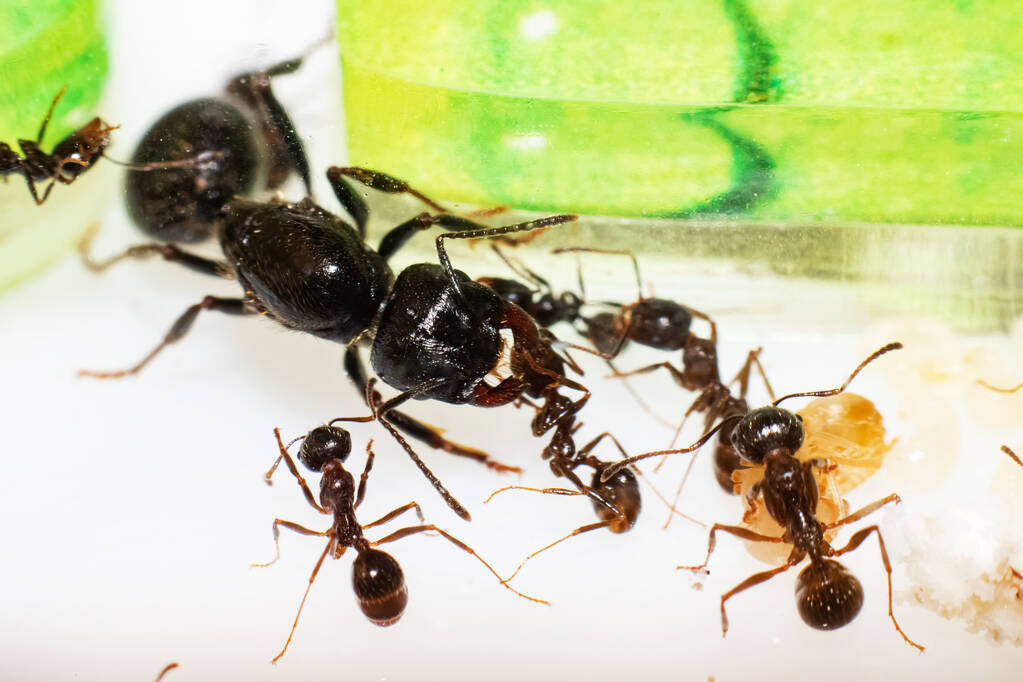
Regular maintenance is key to ensuring your ant farm remains a healthy and sustainable environment for your ants.
Feeding Your Ants
Providing a balanced diet supports the health and productivity of your colony.
| Recommended Foods |
|---|
| Sugar Water: Source of carbohydrates. |
| Protein Sources: Small insects, bits of fruit, or commercial ant food. |
| Hydration: Ensure a constant supply of water to prevent dehydration. |
Tip: Avoid overfeeding to prevent mold growth and maintain cleanliness within the ant farm.
Cleaning the Ant Farm
Keeping the ant farm clean prevents mold and disease, ensuring a healthy environment for your ants.
| Cleaning Steps |
|---|
| Regular Removal of Debris: Remove leftover food and waste regularly. |
| Spot Cleaning: Wipe down areas with visible mold or dirt using a damp cloth. |
| Full Clean-Out: Every six months, perform a thorough clean, replacing the substrate and disinfecting components. |
Monitoring Ant Health
Keeping an eye on the health of your ants helps identify issues early.
| Health Indicators |
|---|
| Active Tunnels: Healthy ants actively maintain and expand tunnels. |
| Egg Production: A healthy queen continuously lays eggs. |
| Ant Behavior: Watch for signs of distress, such as lethargy or aggressive behavior. |
Unique Insight: Introducing a small number of queen ants can help sustain the colony by ensuring continuous egg production.
Managing Colony Size
Balancing the number of ants in your farm prevents overcrowding and resource depletion.
| Managing Tips |
|---|
| Limit Colony Size: Avoid introducing too many ants at once. |
| Separate Queens: If possible, manage multiple queens to control colony expansion. |
| Regular Monitoring: Keep track of colony growth and make adjustments as needed. |
Preventing Mold and Fungus
Maintaining cleanliness and proper humidity levels reduces the risk of mould and fungus growth.
| Prevention Tips |
|---|
| Control Humidity: Keep humidity within the optimal range. |
| Avoid Excess Moisture: Prevent water from accumulating and creating damp environments. |
| Use Ant Farm Design Features: Opt for farms with built-in ventilation and drainage systems. |
Signs Your Ant Farm Needs Attention
Recognizing early signs of trouble can help you take corrective actions before major issues arise.
Visible Signs of Problems
| Sign | Description |
|---|---|
| Discolored Ants: Ants appearing dull or discolored may indicate poor health. | |
| Dead Ants: A sudden increase in deceased ants can signal disease or environmental stress. | |
| Mold Growth: White or green spots on the substrate or walls indicate excessive moisture. | |
| Collapsed Tunnels: Weak tunnel structures suggest structural issues or overcrowding. |
Behavioural Signs
| Sign | Description |
|---|---|
| Reduced Activity: Less movement and tunnel maintenance indicate stress or health issues. | |
| Aggression: Increased aggression among ants can result from overcrowding or lack of resources. | |
| Lethargy: Slow-moving ants may be suffering from poor nutrition or environmental conditions. |
Maintenance Indicators
| Indicator | Action Required |
|---|---|
| Frequent Cleaning Needs: May require more frequent maintenance or a change in cleaning routine. | |
| Ant Farm Not Ventilating Properly: Adjust placement or improve ventilation to enhance airflow. | |
| Consistent Overheating: Reevaluate the cooling and environmental conditions to reduce temperatures. |
Tips to Prolong Your Ant Farm’s Lifespan
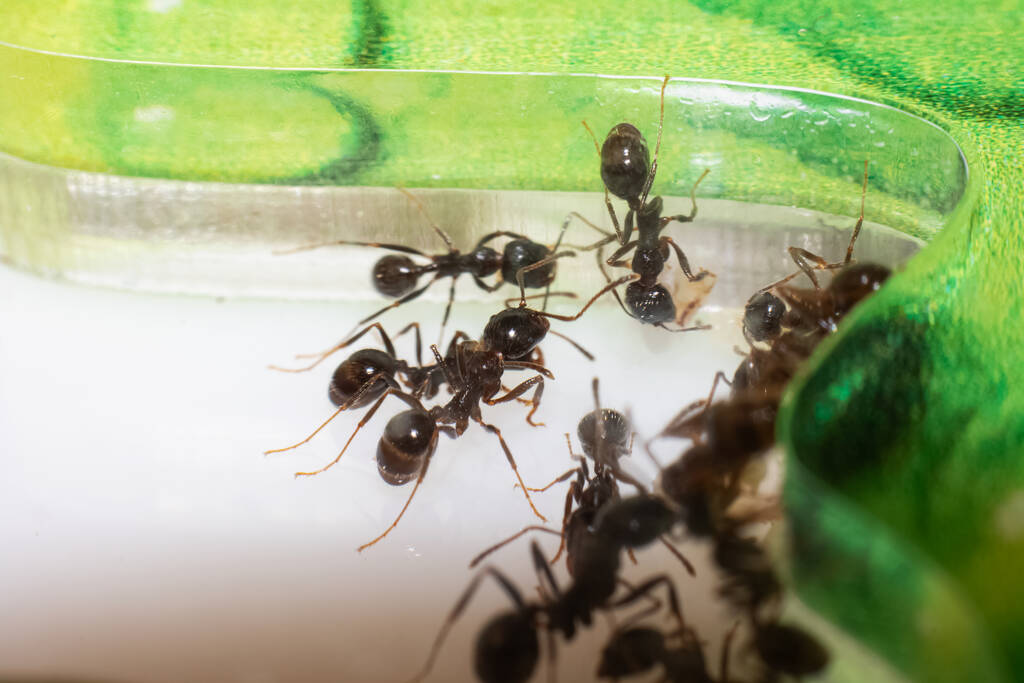
Implementing the following tips can help ensure your ant farm remains a thriving environment for as long as possible.
Provide a Balanced Diet
A varied and nutritious diet supports the overall health and productivity of the colony.
| Dietary Tips |
|---|
| Offer a Mix of Carbohydrates and Proteins: Balance sugar water with protein sources. |
| Rotate Food Types: Prevent boredom and ensure nutritional diversity. |
| Avoid Spoiled Food: Regularly check and remove expired or moldy food items. |
Maintain Optimal Environmental Conditions
Stable and suitable conditions are crucial for ant farm longevity.
| Environmental Tips |
|---|
| Monitor Temperature and Humidity: Use tools like thermometers and hygrometers to keep track. |
| Ensure Adequate Ventilation: Prevent heat buildup and ensure fresh air circulation. |
| Protect from Extremes: Keep the farm away from windows, heaters, and other sources of temperature fluctuations. |
Regular Cleaning and Maintenance
Consistent upkeep keeps the ant farm healthy and prevents issues.
| Maintenance Tips |
|---|
| Clean Debris Daily: Remove leftover food and waste every day. |
| Deep Clean Periodically: Perform thorough cleaning every few months to remove mold and refresh the substrate. |
| Inspect Components: Regularly check water sources, pumps, and other components for functionality and cleanliness. |
Manage Colony Size and Health
A balanced colony size ensures sustainable living conditions.
| Colony Management Tips |
|---|
| Avoid Overcrowding: Introduce ants gradually and monitor population growth. |
| Introduce New Queens Carefully: If adding new queens, ensure they are healthy and compatible with the existing colony. |
| Remove Dead Ants Promptly: Prevent disease spread by quickly removing deceased ants from the farm. |
Use Quality Materials and Equipment
Investing in high-quality components reduces the risk of leaks and other issues.
| Quality Tips |
|---|
| Choose Durable Containers: Select ant farms made from sturdy materials that resist cracking and leakage. |
| Use Reliable Water Sources: Ensure water sources are clean and free from contaminants. |
| Opt for High-Quality Substrates: Use substrates that retain moisture without becoming waterlogged. |
Environmental Factors Affecting Ant Farm Durability
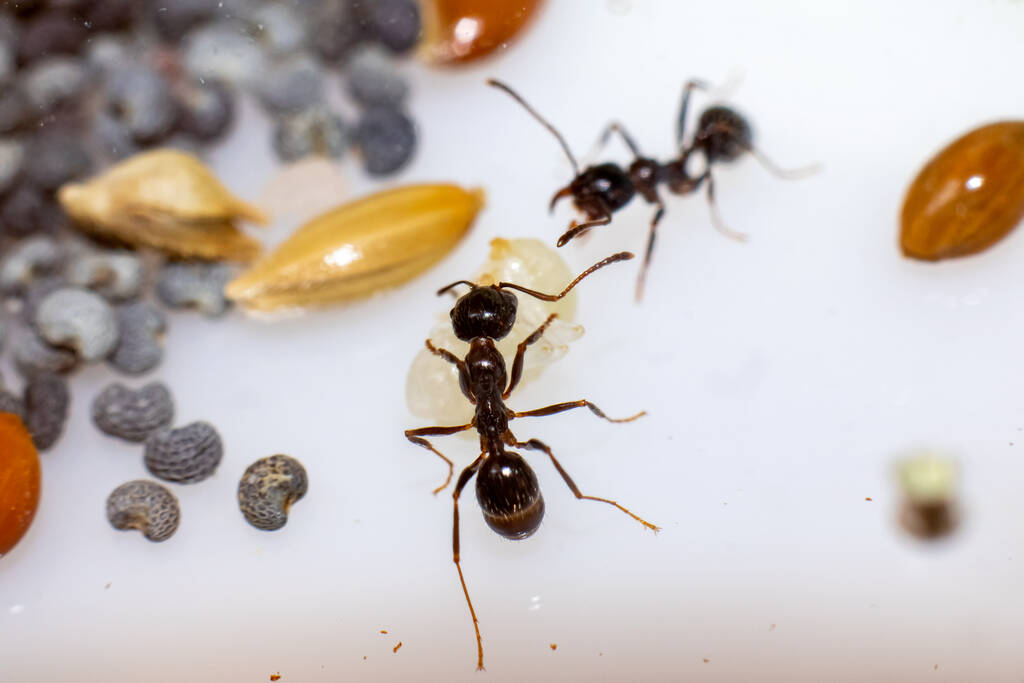
Understanding the external factors that influence your ant farm’s durability helps in creating a more resilient environment.
Temperature and Humidity
Maintaining stable temperature and humidity is essential for ant health.
| Optimal Conditions | Impact on Ant Farm |
|---|---|
| Consistent Temperature (70°F – 80°F) | Promotes active foraging and tunnel maintenance. |
| Controlled Humidity (40% – 60%) | Prevents dehydration and mold growth. |
| Avoiding Extreme Changes | Reduces stress and health issues in ants. |
Light Exposure
While ants do not require light to survive, providing a natural light cycle can influence their behaviour.
| Light Exposure Tips |
|---|
| Natural Day-Night Cycle: Mimic the natural environment by providing periods of light and darkness. |
| Avoid Direct Sunlight: Prevent overheating and drying out by shielding the ant farm from intense sunlight. |
| Consistent Lighting Schedule: Helps regulate ant activity patterns. |
Placement of the Ant Farm
Choosing the right location for your ant farm enhances its longevity and health.
| Placement Tips |
|---|
| Stable Environment: Place the ant farm in a room with minimal temperature fluctuations. |
| Accessible Viewing: Ensure the farm is in a place where you can easily observe and monitor the ants. |
| Away from Pets and Children: Prevent disturbances and potential harm to the ants. |
Avoiding External Disturbances
Minimizing disturbances helps maintain a stable and stress-free environment for your ants.
| Disturbance Prevention Tips |
|---|
| Limit Handling: Reduce unnecessary handling to prevent stress. |
| Secure the Farm: Ensure the ant farm is placed securely to avoid accidental tipping or spills. |
| Quiet Environment: Keep the area around the ant farm calm to avoid startling the ants. |
Making Your Ant Farm Last Longer
Implementing best practices can significantly extend the lifespan of your ant farm, ensuring a thriving colony for years to come.
Choose the Right Ant Species
Different ant species have varying needs and colony dynamics. Selecting a species that suits your maintenance level and observation goals can enhance the longevity of your ant farm.
| Popular Ant Species | Characteristics |
|---|---|
| Lasius Niger (Black Garden Ant) | Hardy, easy to care for, suitable for beginners. |
| Camponotus (Carpenter Ant) | Larger ants, require more space, longer lifespan. |
| Formica Fusca (Fusca Ant) | Known for their extensive tunneling and cooperative behavior. |
Expert Insight: Dr. Laura Green, an entomologist, advises, “For beginners, Lasius niger is an excellent choice due to their resilience and ease of care, ensuring a longer-lasting and manageable ant farm experience.”
Provide Adequate Nutrition and Hydration
Ensuring your ants receive proper nutrition and hydration is fundamental to their health and the farm’s longevity.
| Feeding Tips |
|---|
| Balanced Diet: Offer a mix of carbohydrates (sugar water, honey) and proteins (small insects, bits of fruit). |
| Consistent Feeding Schedule: Feed the ants regularly to prevent starvation and promote colony growth. |
| Clean Water Source: Provide a constant supply of clean water to keep the ants hydrated without causing mold growth. |
Maintain Cleanliness
A clean ant farm prevents the buildup of mold, bacteria, and other harmful organisms.
| Cleaning Tips |
|---|
| Daily Debris Removal: Remove any leftover food and waste at the end of each day. |
| Weekly Spot Cleaning: Wipe down visible areas with a damp cloth to remove dust and prevent mold. |
| Monthly Deep Cleaning: Perform a thorough clean every month, replacing the substrate and disinfecting components as needed. |
Monitor and Adjust Environmental Conditions
Regularly checking and adjusting the farm’s environment ensures that it remains conducive to ant health.
| Monitoring Tips |
|---|
| Use Tools: Utilize thermometers and hygrometers to monitor temperature and humidity levels. |
| Adjust as Needed: Make necessary adjustments, such as misting with water to increase humidity or relocating the farm to a cooler area to reduce temperature. |
| Record Observations: Keep a log of environmental conditions and ant behavior to identify trends and make informed adjustments. |
Promote Ant Health
Healthy ants contribute to a robust and enduring colony.
| Health Promotion Tips |
|---|
| Avoid Pesticides: Keep the ant farm away from areas treated with pesticides or chemicals. |
| Prevent Disease: Introduce only healthy ants and avoid introducing new ants from unreliable sources. |
| Stress Reduction: Minimize disturbances and maintain a stable environment to reduce stress-related health issues. |
Understanding the Lifecycle of Ants in Farms
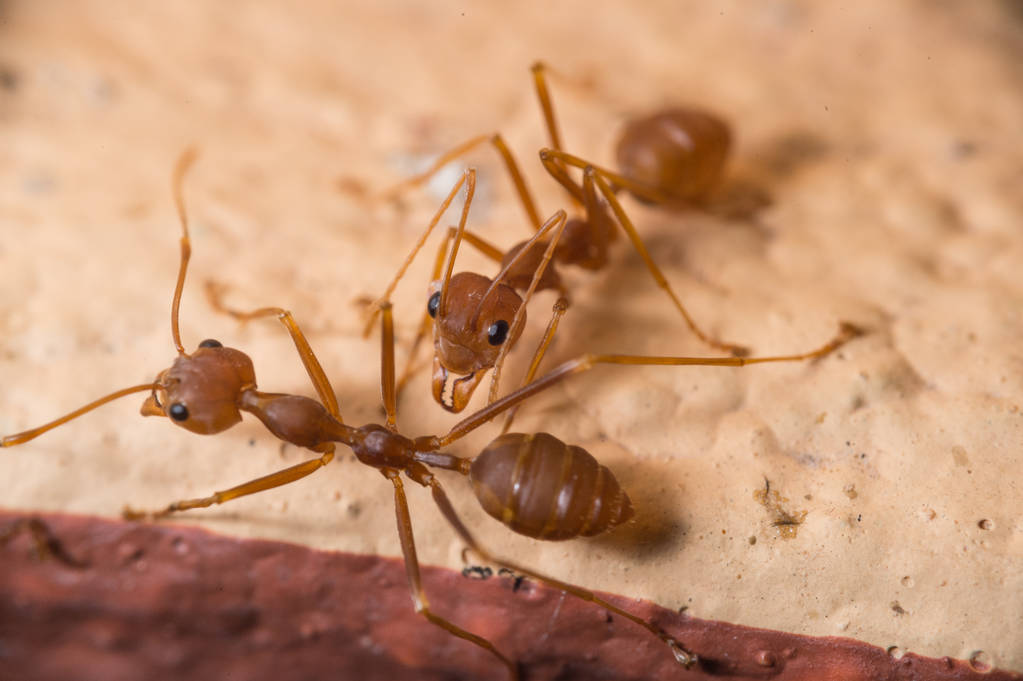
Comprehending the lifecycle of ants helps in managing the colony effectively and anticipating changes in the farm.
Ant Lifecycle Stages
| Stage | Description |
|---|---|
| Egg | Laid by the queen, eggs hatch into larvae. |
| Larva | Feeding stage where larvae grow and develop. |
| Pupa | Transformation stage where larvae become adult ants. |
| Adult | Mature ants perform various roles within the colony. |
Role of the Queen Ant
The queen ant is the cornerstone of the colony, responsible for laying eggs and maintaining the population.
| Queen Ant Responsibilities |
|---|
| Egg Laying: Continuously lays eggs to sustain the colony. |
| Colony Organization: Helps in organizing and expanding tunnels. |
| Reproduction: Ensures the genetic diversity and growth of the colony. |
Worker Ants and Their Roles
Worker ants perform essential tasks that keep the colony functioning smoothly.
| Worker Ant Roles | Description |
|---|---|
| Foragers: Collect food and resources. | |
| Tunnellers: Expand and maintain the tunnel system. | |
| Caretakers: Tend to the larvae and queen. | |
| Defenders: Protect the colony from threats. |
Impact of Lifecycle on Farm Longevity
A thriving colony with a healthy queen and active workers contributes to the overall longevity of the ant farm.
Unique Insight: Maintaining a balanced lifecycle ensures continuous growth and stability within the ant farm, preventing issues like colony collapse or overpopulation.
Common Challenges in Maintaining Ant Farms
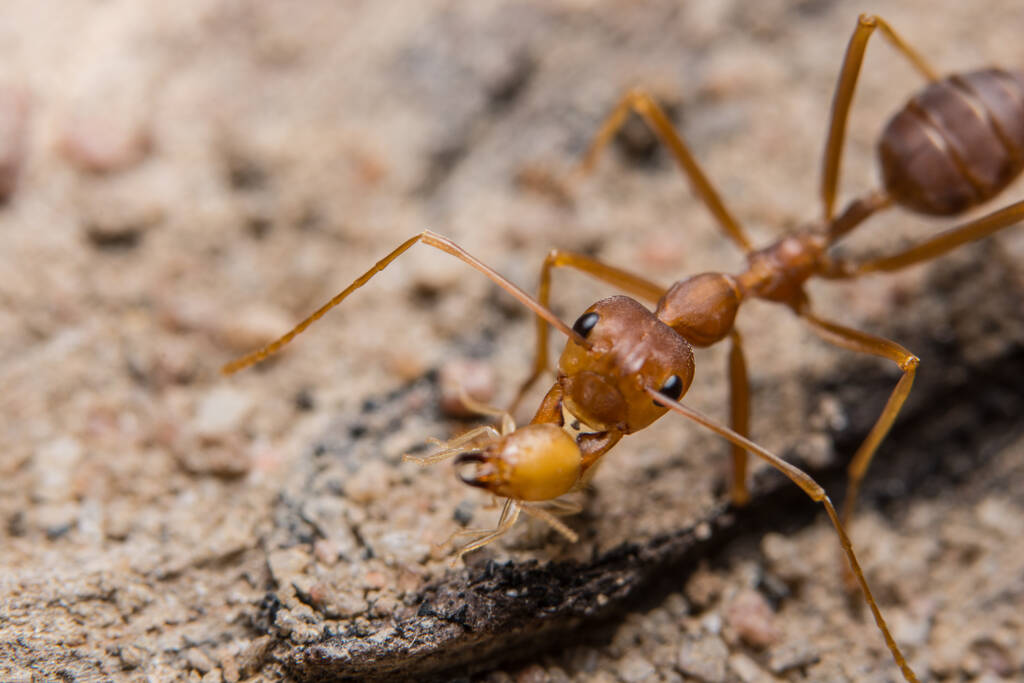
Maintaining an ant farm has its challenges. Being aware of these can help you address them proactively.
Overcrowding
An excessively large colony can lead to resource depletion and increased stress among ants.
| Signs of Overcrowding | Solutions |
|---|---|
| High Ant Population: Rapid increase in the number of ants. | Limit New Introductions: Avoid adding more ants than necessary. |
| Resource Shortage: Lack of food and water resources. | Increase Feeding Frequency: Provide more food and water. |
| Increased Aggression: More territorial behavior among ants. | Split the Colony: Consider creating a new ant farm for excess ants. |
Disease and Pests
Ants can be susceptible to diseases and pests that can disrupt the colony.
| Common Issues | Prevention and Solutions |
|---|---|
| Fungus and Mold: Caused by excessive moisture and poor ventilation. | Control Humidity: Maintain optimal humidity levels. |
| Parasites: Introduced through contaminated food or new ants. | Use Clean Food Sources: Ensure all food is fresh and uncontaminated. |
| Ant Predators: Other insects or small pests that may enter the farm. | Secure the Farm: Ensure all entry points are well-sealed. |
Environmental Fluctuations
Sudden changes in temperature or humidity can stress the ants and disrupt the colony.
| Fluctuation Types | Impact | Solutions |
|---|---|---|
| Temperature Spikes: Sudden increases in temperature. | Causes overheating and stress in ants. | Relocate the Farm: Move to a cooler area. |
| Humidity Drops: Significant decreases in humidity. | Leads to dehydration and drying out of tunnels. | Misting: Regularly mist the ant farm with distilled water. |
| Drafts and Airflow Changes: Inconsistent airflow patterns. | Disrupts ant behavior and tunnel maintenance. | Reposition the Farm: Ensure it is placed in a stable environment with consistent airflow. |
Ant Mortality
High death rates can indicate underlying issues within the ant farm.
| Causes of Mortality | Solutions |
|---|---|
| Poor Nutrition: Lack of essential nutrients. | Improve Diet: Provide a balanced mix of carbohydrates and proteins. |
| Disease: Infections or parasites affecting ants. | Sanitize the Farm: Regularly clean the ant farm and remove affected ants. |
| Environmental Stress: Inappropriate temperature or humidity. | Adjust Conditions: Ensure the farm meets the optimal environmental requirements. |
Expert Tips for a Thriving Ant Farm
Leveraging expert advice can enhance the health and longevity of your ant farm.
Consult with Entomologists
Engage with experts to gain deeper insights into ant behavior and colony management.
Quote: “Understanding the natural behaviors and needs of ants is crucial for maintaining a healthy and long-lasting ant farm,” says Dr. Michael Lee, an entomologist specializing in social insects.
Join Ant Enthusiast Communities
Participate in forums and groups to share experiences and learn from others.
| Benefits of Joining Communities |
|---|
| Knowledge Sharing: Gain tips and solutions from experienced hobbyists. |
| Support System: Receive help when encountering challenges. |
| Resource Access: Discover recommended products and maintenance practices. |
Regular Observation and Documentation
Keeping detailed records of your ant farm’s conditions and ant behaviors helps in identifying patterns and addressing issues promptly.
| Documentation Tips |
|---|
| Daily Logs: Note feeding times, temperature, and humidity levels. |
| Behavioral Notes: Observe and record any changes in ant activity or behavior. |
| Maintenance Records: Keep track of cleaning schedules and any interventions performed. |
Invest in Quality Equipment
Using high-quality ant farms and accessories reduces the likelihood of issues and enhances the overall experience.
| Quality Equipment Features |
|---|
| Durable Materials: Prevents cracks and leaks. |
| Clear Visibility: Allows for better observation of ant activities. |
| Easy Maintenance Features: Simplifies cleaning and upkeep. |
Provide Enrichment Activities
Stimulate the ants’ natural behaviors by introducing structures and materials that encourage exploration and tunnel building.
| Enrichment Tips |
|---|
| Varied Substrate: Use different textures to promote diverse tunnel structures. |
| Obstacles and Barriers: Introduce natural obstacles to challenge and engage the ants. |
| Natural Elements: Incorporate small twigs or leaves to mimic the ants’ natural habitat. |
The Educational Value of Ant Farms
Ant farms offer significant educational benefits, making them valuable tools in both home and classroom settings.
Hands-On Learning
Ant farms provide students with a practical way to observe and understand insect behavior, colony dynamics, and ecosystem interactions.
| Educational Benefits |
|---|
| Biology Lessons: Study of ant anatomy and lifecycle. |
| Ecology Insights: Understanding the role of ants in the ecosystem. |
| Social Behavior Analysis: Observation of cooperative behaviors and division of labor within the colony. |
Developing Observation Skills
Maintaining an ant farm enhances observational skills as students track ant activities and colony changes over time.
| Skills Developed |
|---|
| Attention to Detail: Noticing small changes in ant behavior and colony structure. |
| Critical Thinking: Analyzing why certain changes occur and how to address them. |
| Patience and Responsibility: Learning to care for a living colony requires consistent effort and dedication. |
Promoting Environmental Awareness
Ant farms can foster a sense of responsibility towards nature and the importance of maintaining balanced ecosystems.
| Awareness Benefits |
|---|
| Conservation Lessons: Understanding the impact of environmental changes on ant colonies. |
| Sustainability Practices: Learning how to maintain an ant farm sustainably with minimal waste and resource use. |
| Empathy for Living Organisms: Developing a connection and respect for living creatures through daily care and observation. |
Interactive Learning Tools
Incorporate technology and interactive tools to enhance the educational experience of maintaining an ant farm.
| Interactive Tools |
|---|
| Digital Monitoring: Use sensors and apps to track environmental conditions. |
| Educational Software: Utilize software that simulates ant colony dynamics for comparison and analysis. |
| Augmented Reality: Implement AR tools to visualize ant tunnel structures and behaviors in 3D. |
Common Myths About Ant Farms
Debunking common misconceptions can lead to better understanding and care for your ant farm.
Myth 1: Ant Farms Are Only for Kids
Reality: Ant farms are enjoyed by enthusiasts of all ages, offering educational value and a unique hobby for adults as well.
Myth 2: Ant Farms Are Difficult to Maintain
Reality: With the right setup and regular maintenance, ant farms, especially closed-loop systems designed for simplicity, can be easy to care for.
Myth 3: All Ant Farms Are the Same
Reality: There are various types of ant farms, each with different features and maintenance requirements. Choosing the right type depends on your needs and expertise.
Myth 4: Ants Will Escape Easily
Reality: Most ant farms are designed with secure barriers that prevent ants from escaping. Proper maintenance and regular checks ensure that the farm remains secure.
Myth 5: Ant Farms Don’t Require Much Attention
Reality: Like any living ecosystem, ant farms require consistent care, including feeding, cleaning, and monitoring environmental conditions to ensure the health and longevity of the colony.
Conclusion
Ant farms offer a captivating glimpse into the world of ants, providing both educational and recreational value. On average, ant farms last between two to three years, with some lasting longer when properly maintained. By understanding the factors that influence their lifespan, choosing the right type of ant farm, and implementing effective maintenance practices, you can ensure a thriving and enduring colony. Whether you’re a beginner or an experienced enthusiast, the joy of watching ants build their tunnels and sustain their colony makes ant farms a rewarding hobby.
